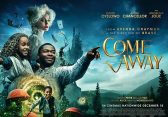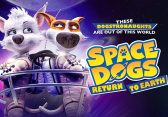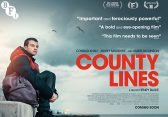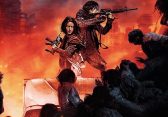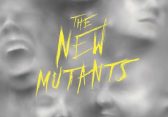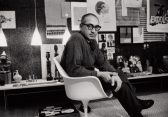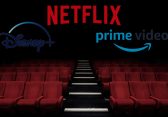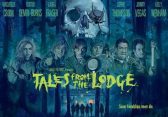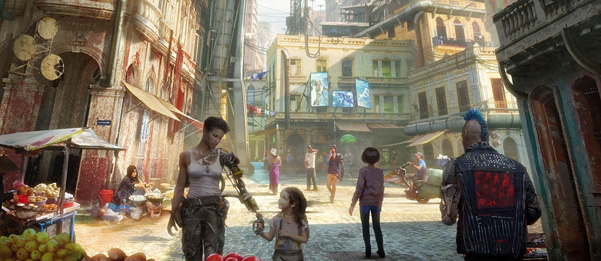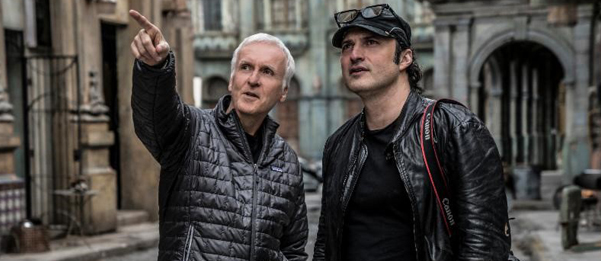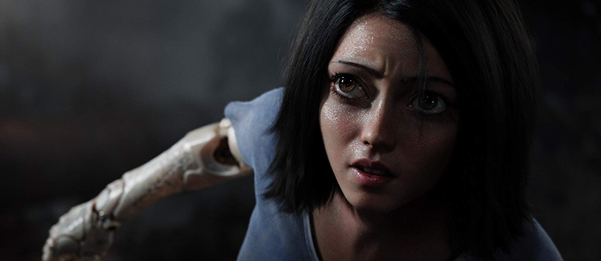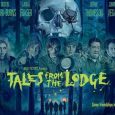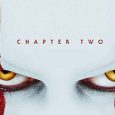Back in December 2018, we had the pleasure to attend a 30-minute preview of the upcoming Sci-Fi action spectacle produced by James Cameron Alita: Battle Angel. You can read what we thought of the footage we saw here. After the preview, Empire Magazine editor Terri White hosted a Q&A with director Robert Rodriguez and producer Jon Landau, which has been transcribed here.
White: I want to start with you Jon because this is famously… 20 years in the making?
Landau: 19! I’ve told you a million times not to exaggerate.
White: We may have put 20 on the Empire Magazine cover, so I’m sorry if I mislead anyone. But you’ve been there from the beginning, obviously, you’re James Cameron’s longtime producing partner. What were those early days like? And by the way, I love the story of how he first found out about Alita, do you want to share that?
Landau: We first found out about Alita through our friend Guillmero Del Toro, who was a fan of the material. He shared it with us and when we saw it we both fell in love with it. Jim (Cameron) so much so that he saw it as a movie that he wanted to direct. So Jim took up the writing of the script, he ultimately worked with Laeta Kalogridis but he finally got to a point where he was happy with the script 5 years later. At that same time, we looked at the landscape of what was possible, and we realised we could be the impetus to push another movie which Jim had written 10 years earlier into actually happening. And that movie was Avatar.
Jim really struggled for about a year of Research & Development as to which movie he wanted to make, and it wasn’t until the very last minute that he chose to do Avatar. But once he did, and once we realised we were embarking on a series of sequels, we had to find the right filmmaker to partner with, and as I describe “to raise our child with”. It took us a while to find that person but we got lucky out of a social lunch that Robert (Rodriguez) had with Jim.
White: And Robert, from your perspective. You’ve known Jim for quite a few years, right? Since the 90s.
Rodriguez: Yeah I knew him just before Desperado, so he and I have been friends. We both came into the business the same way, very hands-on type guys. You forget that Jim started really low budget as well because he makes such big, spectacular films now. Very cutting edge. But he was that kind of a guy, so we had that kind of friendship. We actually tried to make a couple of different things together over the years, and then yeah it was just a social event. I hadn’t seen him in a while. We were catching up and he was showing me all the new art for the next Avatar when he let out that he was probably only going to make Avatar movies for the rest of his career. But as a fan, I’d always heard of Battle Angel so I asked him “Well what happens to Battle Angel? When are we going to see that?” and he said: “Well I’m probably not going to have a chance to make it now. But if you want to check out the script and see the art reel I did, you can”.
I couldn’t believe I was going to see some of this ‘what-could-have-been-Jim Cameron’ movie. But I was so blown away by the script, which was about 200 pages because he never had the chance to really cut it down. So I just offered to give it a whack and try to get it down to a suitable length. Because it didn’t really need to be rewritten, it just needed to be cut down. Otherwise, it was all in there. Everything you’ve just seen was in there. So I gave it a shot and he loved the truncated version of it, so we went off and made the film.
White: Did you offer or did James Cameron say if you can make the script work it’s yours?
Rodriguez: He did say that. He said if you can crack the script you can direct it. I made it my summer project to see if it was possible. But it seems like his stories still have their vitality even when you truncate it. If you take out the right things because he writes such a complete world.
White: Well if James Cameron sets you a challenge, you pretty much accept that right!
Rodriguez: We wanted to work together so I knew that this would be the best way. It would satisfy a couple of needs. One to work with him but also to see a movie that I always wanted to see him make. One that none of us would ever get to see otherwise because of the success of Avatar. So a chance to help to bring to life the lost Jim Cameron film was too enticing for a film fan to not be a part of.
White: I just want to speak to you about the technological innovation we just saw from that footage. We are used to this from James Cameron films but can you talk a little bit about that process and the quality we’re seeing onscreen with Alita.
Landau: Well it’s funny because when we were doing Avatar we said to ourselves that we wanted to take motion capture and turn it into performance capture. Motion capture prior to that we felt had always been missing a key letter in front of it and that’s E for Emotion capture. By connecting the head rig to the body performance we were able to truly tap into the cast performance. When we looked at Alita we wanted to pay tribute and homage to the Manga in general, but also to the world that Kishiro had created. For that, we knew we needed a CG character, but we also knew that we needed to take it to the next level. To go beyond what had done on Avatar or beyond Caesar in the Planet of the Apes series.
WETA Digital really embraced that and we were able to make a process where Rosa Salazar, who gives us an incredible performance, is out there in live action sets, playing opposite actors, touching, feeling them. Scenes with more interaction between a CG and live action character that’s ever been done. But it was really all about getting her facial performance and that starts with the design. Starting out in flat art with an art department and processing it through a series of iterations as a CG model. But it’s not until you start dropping it into shots until we can truly evaluate it. Even then we are continually working on it. WETA actually told us that we have more detail in a single eye of Alita’s than they had in all of Gollum in The Lord of the Rings. So that really demonstrates the level of render technology.
White: But it’s not just in Alita. When we saw that incredible ‘Motoball’ action sequence we saw all the different design pieces of other characters. And it doesn’t seem like a straightforward genre movie. There’s a bit of romance, a bit of action, blending all these things together in a very unique way.
Landau: That’s what Jim does.
Rodriguez: Yeah he told us when we were working on it that it was a complete vision of the future. Meaning you need to realise every aspect of it. You have to build the world to make it feel real, which is very different to what I’m used to doing. My movies are usually very low budget and I started as a cartoonist so I tend to go with more whimsical fantasy. So if one of my characters picks up a guitar case and fires a missile from it, I don’t think the audience really needs to know how it works. Most people just go with it because it’s that kind of a movie. But there are some sticklers that would say “that doesn’t work!”. Jim would be that guy. Jim would be the guy that says “Wait, how it’s firing, how does it reload and how does the guys head not explode when he fires it. I don’t buy it, I don’t believe it, it pulls me out of the movie”.
It’s a different kind of film making and that’s why his movies stand the test of time and are so easy to invest emotionally because his science fiction is more based on science fact. I think especially when you’re doing science fiction or fantasy, it has to feel completely real and grounded. Otherwise, you’re not going to buy that Alita is real. So that was really cool for me, to realise that I have to shoot with real sets, real locations, no green screen. So she can sit in the frame with real actors and feel completely believable. The detail to every one of those Motoball players has to be very sharp because you have to believe that it’s actually there. The same goes for everything in the world, or else you won’t believe the story or Alita’s journey. It has to be a complete vision of the future.
Landau: We continued to gain inspiration from Kishiro’s work. We actually have Motoball players in another sequence we didn’t show tonight that are right out of the graphic novels. But anytime we designed a new character, we kept in mind the world Kishiro created and his design aesthetic. One of the biggest joys I’ve had during this process is when Kishiro actually came to visit the set down in Austin. I tell people that Kishiro is a man of few words but when he walked onto the set the smile on his face said more than a million words could possibly say.
White: Was it a big change for you as a filmmaker, because you often write your own films, shoot, edit and do your own cinematography. Can you talk about that change for you as a filmmaker?
Rodriguez: Yeah from time to time I’m able to afford a great DP (Director of Photography), composer or co-editor depending on how much money was left in the purse. But on Alita, I was able to get a full staff of really top tier people because of Jim and Jon (Landau). Everyone wants to work with them. But what’s great about when you know all these other jobs as I do, your communication with them is at just another level. You know their job. You know the challenges of their job and you’re not going to ask them to do something impossible, which is what they get from other directors who don’t know anything about those things.
Click here to read our review of Alita: Battle Angel
Comments

